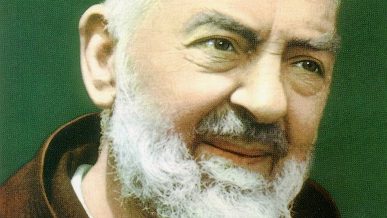St. Pio of Petrelcina, better known as Padre Pio, was born Francesco Forgione, in 1887. His parents had seven children, two of whom died as infants. The surviving children were raised with a strong faith, attending daily Mass, saying family rosaries, and performing regular acts of penance.
At a young age, Francesco knew he wanted to dedicate his life to God. At 10, he determined he wanted to be a “friar with a beard,” and his father began working in America to finance Francesco’s education.
On January 22, 1903, Francesco donned the Franciscan habit. He took the name Pio, a modernized Italian form of “Pius,” in honor of Pope St. Pius V. Four years later, he made his solemn vows, and was ordained a priest in 1910. Shortly afterwards, he received the Stigmata.
Along with these wounds, Pio suffered from health problems and was forced to live apart from his community for the first six years of his priesthood. By 1916, he was well enough to re-enter community life at the Friary of San Giovanni Rotondo, where he lived until his death. He was a spiritual director and teacher, covering for brothers who were drafted in World War 1.
During 1917 and 1918, Padre Pio briefly served in a medical unit of the Italian army. He later offered himself as a spiritual “victim” for an end to the war, accepting suffering in prayers for peace. He received the Stigmata again, and the wounds remained for the next 50 years, through many global conflicts.
Although he didn’t want attention, Padre Pio’s holiness, and reputation for miracles, began to attract huge crowds. Some Church officials denounced him and had him banned from public ministry in 1931. Pope Pius XI ended the ban two years later, and Pius XII encouraged pilgrimages to his friary.
Padre Pio was known for his patient suffering and his fervent prayer. He also lent his efforts to the establishment of a major hospital, the “Home to Relieve Suffering.”
Padre Pio died in 1968. He was declared a saint in 2002.

